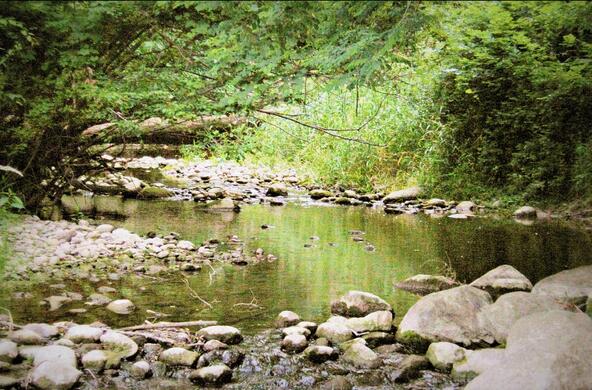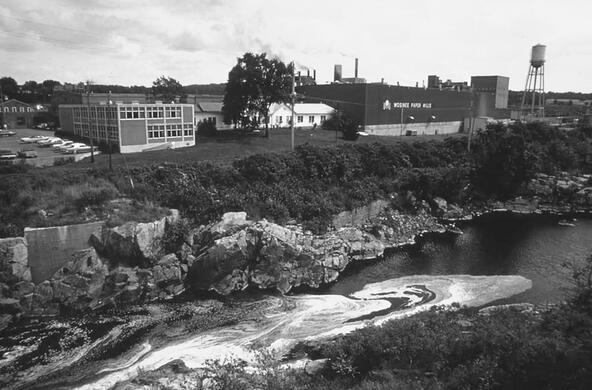(Millbrook, NY) Pharmaceutical and illicit drugs are present in streams in Baltimore, Maryland. At some sites, amphetamine concentrations are high enough to alter the base of the aquatic food web. So reports a new study released today in the journal Environmental Science & Technology, which is one of the first to explore the ecological consequences of stimulant pollution in urban streams.
Lead author Sylvia S. Lee conducted the work as a postdoctoral researcher at the Cary Institute of Ecosystem Studies. Lee, now with the Environmental Protection Agency, comments, "Around the world, treated and untreated wastewater entering surface waters contains pharmaceuticals and illicit drugs that originate from human consumption and excretion, manufacturing processes, or improper disposal. We were interested in revealing how amphetamine exposure influences the small plants and animals that play a large role in regulating the health of streams."

Lee and her collaborators measured concentrations of pharmaceutical and illicit drugs at six stream sites along an urban-to-rural gradient in Baltimore, Maryland. Numerous drugs, including amphetamine, were detected in stream sites, with illicit drug levels highest in the most urban streams. Sampling was performed in 2013 and 2014. Suburban and urban fieldwork focused on the Gwynns Falls watershed, which is part of the Baltimore Ecosystem Study Long-Term Ecological Research program. The two rural streams were located in Oregon Ridge watershed, the closest forested region.
Field sampling was then followed up with an artificial stream experiment to determine how amphetamine – a biologically active, highly addictive, and widely used drug – affects stream life. In recent years, there has been an increase in the use of amphetamine medications in the treatment of conditions like attention-deficit hyperactivity disorder. At the same time, stimulants like methamphetamine, ecstasy, and cocaine are also used illicitly.

Co-author Emma J. Rosi-Marshall, a freshwater ecologist at the Cary Institute, comments, “We have every reason to suspect that the release of stimulants to aquatic environments is on the rise across the globe, yet little is known about the ecological consequences of this pollution. We found that when artificial streams were exposed to amphetamine at a concentration similar to what we found in parts of the Gwynns Falls watershed, there were measurable and concerning effects to the base of the aquatic food web.”
After recreating natural stream attributes in the Cary Institute’s Artificial Stream Facility, four streams received a target amphetamine concentration of 1 μg L-1 and four streams were maintained as controls. Researchers monitored ecosystem effects over three weeks. Among their findings: in streams with the amphetamine addition, the growth of biofilms was significantly suppressed, the composition of bacterial and diatom communities changed, and aquatic insects emerged earlier.
The field component of this study is one of the first to report amphetamine in wastewater-impacted environments at concentrations approaching 1 μg L-1. The laboratory component confirms that amphetamine is present in the Gwynns Falls watershed at concentrations that have the potential to affect stream ecosystem structure and function.

Rosi-Marshall concludes, "As society continues to grapple with aging wastewater infrastructure and escalating pharmaceutical and illicit drug use, we need to consider collateral damages to our freshwater resources. More work is needed on the ecological fate of these pollutants and the threat they pose to aquatic life and water quality. Ultimately, solutions will lie in innovations in the way we manage wastewater."
In addition to Lee and Rosi-Marshall, the paper's research team included graduate student Alexis M. Paspalof (University of Nebraska–Lincoln), environmental chemist Daniel D. Snow (University of Nebraska–Lincoln), PhD candidate Erinn Richmond (Monash University), and microbial ecologist John J. Kelly (Loyola University Chicago). Funding was provided in part by the Wallace Genetic Foundation, the Baltimore Ecosystem Study Long-Term Ecological Research program, the Hudson River Foundation, and the Polgar Foundation.
Citation
Sylvia S. Lee, Alexis M. Paspalof, Daniel D. Snow, Erinn K. Richmond, Emma J. Rosi-Marshall, and John J. Kelly. Occurrence and Potential Biological Effects of Amphetamine on Stream Communities. Environmental Science & Technology . DOI: 10.1021/acs.est.6b03717
Disclaimer: The views expressed in this article are those of the authors and do not necessarily reflect the views or policies of the U.S. Environmental Protection Agency.
Editor's Note: Due to an erroneous headline by a major news network, a number of regional TV stations, radio stations, and websites reported that this study investigated the impact of methamphetamine on stream ecosystems. It did not. It focused on amphetamine, which is found in illicit drugs as well as in pharmaceuticals used to treat conditions like attention deficit disorder, sleep disorders, and obesity.





